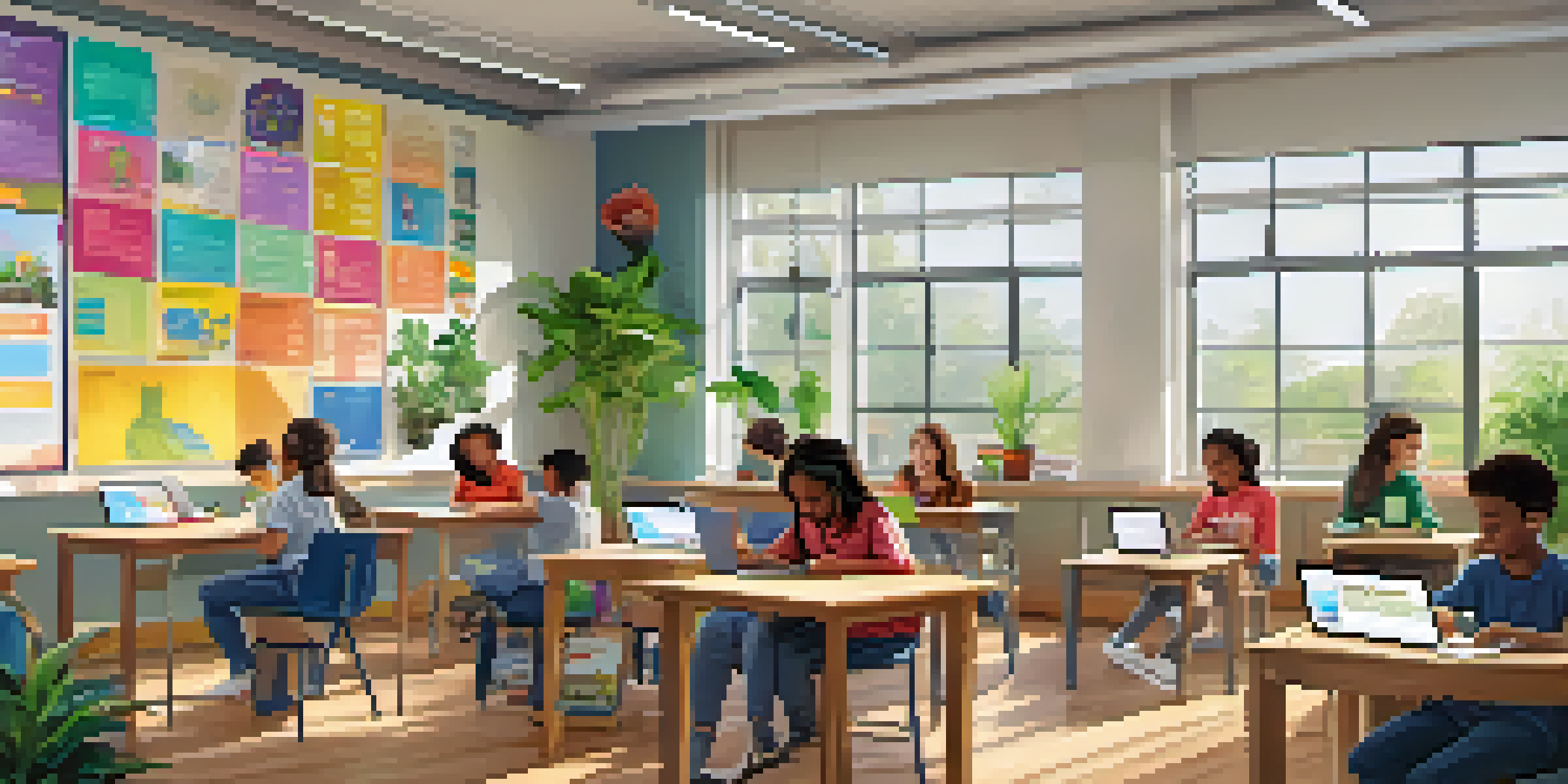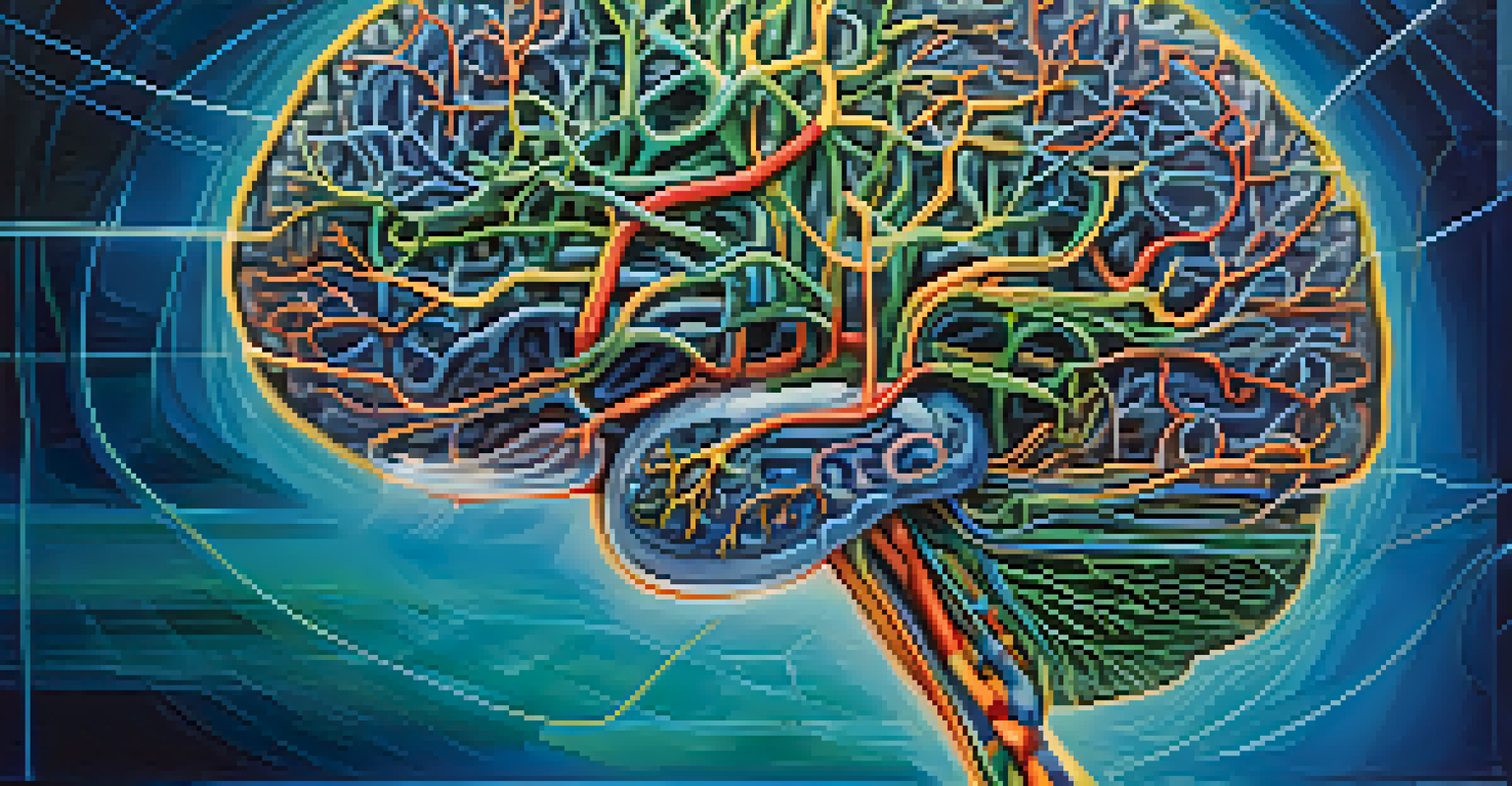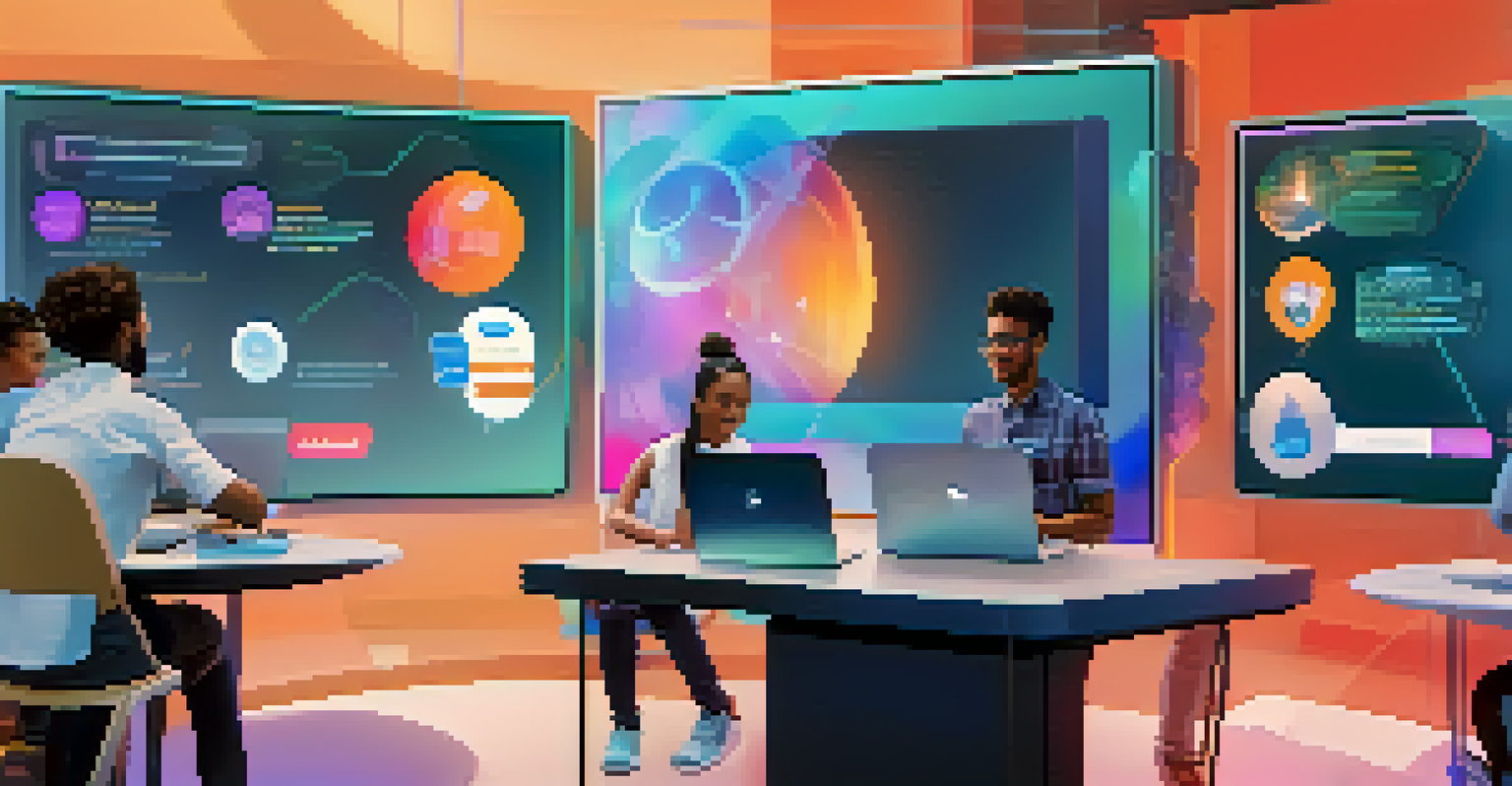Exploring the Neuroscience of Digital Learning Preferences

Understanding Digital Learning Preferences Through Neuroscience
Digital learning preferences are influenced by how our brains process information. Neuroscience reveals that our cognitive functions shape the way we engage with online content. For instance, some people might prefer video lessons, while others lean towards text-based materials, driven by their unique brain wiring.
The mind is not a vessel to be filled, but a fire to be kindled.
This diversity in learning styles can be linked back to neural pathways and synaptic connections. Research indicates that certain neural circuits are more active in individuals who favor visual learning. Understanding these differences can help educators tailor digital experiences to suit various learners.
By exploring these preferences through a neuroscience lens, we can create more effective digital learning environments. This insight empowers educators and content creators to design materials that resonate with the unique ways our brains absorb information.
The Role of Attention in Digital Learning
Attention is a crucial factor in digital learning, as our brains can only focus on a limited amount of information at once. Neuroscience shows that distractions can significantly affect our cognitive load and retention. When learning digitally, it’s essential to capture and maintain learners’ attention for effective knowledge transfer.

Techniques such as interactive content, gamification, and engaging visuals can enhance attention spans. For example, a well-designed online quiz can encourage participation and keep learners focused. By leveraging attention-grabbing strategies, we can mitigate the impact of distractions.
Neuroscience Shapes Learning Styles
Understanding how our brains process information helps tailor digital learning experiences to various preferences.
Ultimately, understanding how attention works in a digital context allows us to create more engaging learning experiences. Educators can utilize these insights to develop content that not only captures attention but also fosters deeper learning.
Memory Formation and Digital Learning Experiences
Memory plays a vital role in how effectively we learn from digital content. Neuroscience reveals that our brains encode information through various processes, including repetition and emotional connection. Digital learning environments can harness these processes to enhance memory retention.
Education is not the filling of a pail, but the lighting of a fire.
For instance, incorporating storytelling elements into lessons can create emotional resonance and aid recall. When learners connect emotionally with the material, they are more likely to remember it. This underscores the importance of crafting narratives in digital learning content.
By recognizing the interplay between memory and digital learning, educators can design experiences that stick. Tailoring content to leverage memory formation strategies can transform how learners interact with information.
The Impact of Personalization on Learning Outcomes
Personalization is a key factor in improving digital learning outcomes. Neuroscience has shown that tailored experiences can enhance engagement and motivation, making the learning process more effective. When learners feel that content is designed for them, they are more likely to invest their time and effort.
Adaptive learning technologies are a prime example of this personalization in action. These tools analyze learners’ interactions and adjust content accordingly, creating a unique pathway for each individual. This approach not only caters to different learning preferences but also supports diverse paces of learning.
Attention Enhances Digital Learning
Capturing and maintaining attention through interactive content is crucial for effective knowledge transfer in digital environments.
By prioritizing personalization in digital learning, we can create environments that resonate with each learner's needs. This individualized approach fosters motivation and leads to better academic performance.
Social Interaction and Collaborative Learning Online
Social interaction is an essential component of effective learning, even in digital environments. Neuroscience indicates that collaboration can enhance cognitive functions and lead to better retention of information. Digital platforms that facilitate interaction can significantly improve the overall learning experience.
For example, discussion forums or group projects allow learners to share insights and perspectives. This exchange of ideas not only deepens understanding but also fosters a sense of community. When students feel connected to their peers, they are more likely to engage meaningfully with the material.
Recognizing the importance of social interaction in digital learning can shape how we design online courses. By incorporating collaborative elements, we can create richer, more engaging learning experiences that reflect real-world dynamics.
Cognitive Load Theory and Its Relevance in Digital Learning
Cognitive Load Theory (CLT) provides valuable insights into how we process information when learning digitally. It suggests that our working memory has limited capacity, and overwhelming learners with too much information can hinder understanding. Recognizing this can help educators create more effective digital content.
For instance, breaking down complex topics into smaller, manageable chunks can reduce cognitive overload. Using clear visuals and concise text can also aid comprehension. This approach aligns with how our brains naturally prefer to absorb information, making learning more intuitive.
Personalization Boosts Engagement
Tailored learning experiences increase motivation and improve outcomes, making education more effective for each individual.
By applying CLT principles, we can design digital learning experiences that optimize cognitive processing. This ensures learners can focus on understanding rather than feeling overwhelmed by excessive information.
The Future of Digital Learning: Trends and Neuroscience Insights
As technology advances, the landscape of digital learning continues to evolve. Neuroscience insights are at the forefront of this evolution, informing the development of innovative learning methods. Understanding how our brains function can lead to more effective educational practices in the digital realm.
Emerging trends such as virtual reality (VR) and artificial intelligence (AI) are transforming how we learn. These technologies can create immersive experiences that cater to various learning preferences, making education more engaging and effective. Neuroscience research can guide the integration of these technologies in ways that enhance learning outcomes.

Looking ahead, the synergy between neuroscience and digital learning will shape future educational practices. By staying attuned to these developments, we can ensure that digital learning environments continue to meet the diverse needs of learners.
Conclusion: Embracing Neuroscience for Better Learning
Understanding the neuroscience behind digital learning preferences is crucial for creating effective educational experiences. By recognizing the diverse ways our brains process information, we can tailor digital content to better suit learners’ needs. This not only enhances engagement but also improves retention and understanding.
As we continue to explore the intersection of neuroscience and digital learning, it’s essential to embrace innovative strategies that cater to various learning styles. From personalization to collaborative approaches, the possibilities are vast. The key is to remain flexible and responsive to the ever-changing landscape of education.
In conclusion, integrating insights from neuroscience into digital learning practices can lead to richer, more effective educational experiences. By prioritizing the unique ways our brains work, we can empower learners to thrive in a digital world.